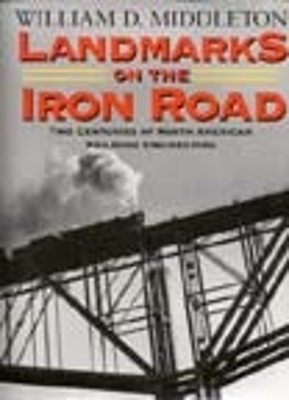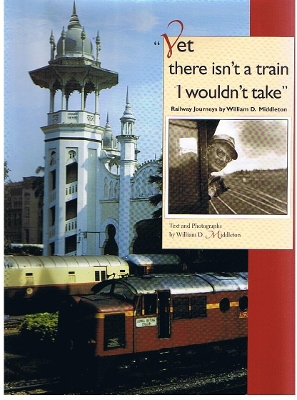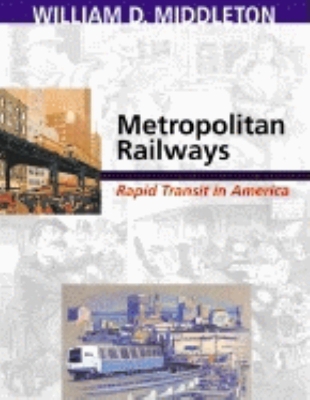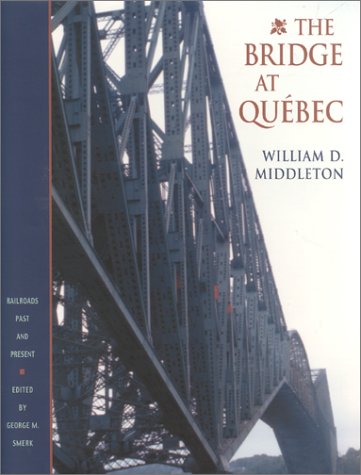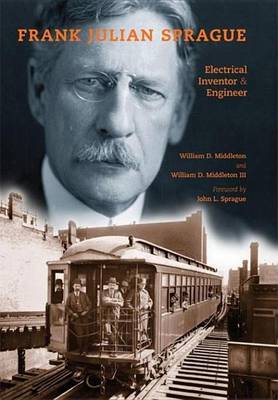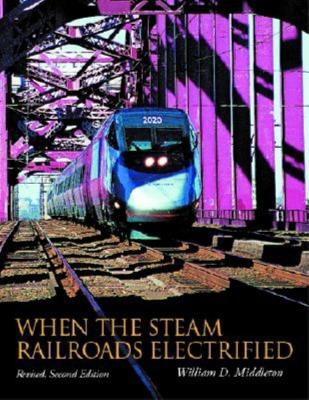Railroads Past and Present
6 total works
American civil engineers were unsurpassed in their ability to buildrailroads over great distances and across high mountain passes, to erect greatbridges, or to bore tunnels of prodigious length. This is a remarkable story of theapplication of engineering to the building of a transportation system that civilizedand settled America, and then supported an industrial revolution and created a worldpower.
Yet there isn't a train goes by all day
But I hear its whistle shrieking....
Yet there isn't a train I wouldn't take,
No matter where it's going.
—Edna St. Vincent Millay, "Travel"
"Yet there isn't a train I wouldn't take" is a collection of stories about favorite train journeys by an inveterate railway enthusiast and train traveler. A half century career as an engineer, Naval officer, and university administrator took Bill Middleton to almost every part of the globe, and everywhere he took with him an abiding interest in railways, and a notebook and camera to record his experiences. His North American journeys have included experiences as diverse as the long journey north through Manitoba to polar bear country on Hudson Bay, a trip to Minnesota's Mesabi Range to haul a boatload of iron ore to Lake Superior behind a giant Yellowstone articulated steam locomotive, and the trip between Costa Rica's Atlantic and Pacific coasts by narrow gauge railway. His European travels have ranged from a Pullman seat on the crack London-Paris Golden Arrow to the slow trip across Thrace on one of the last runs of the celebrated Simplon-Orient Express. In Asia he traveled through the Toros Mountains of Turkey on the famous Istanbul-Baghdad Toros Express, experienced modern high-speed railroading in the cab of Japan's Bullet Train, and rode to Asia's highest mountain east of the Himalayas on the little trains of Taiwan's Ali Shan Forestry Railway.
Early in the 19th century, growing American cities began to experience transportation problems. One solution was the horse-drawn streetcar, developed in 1832, but it soon proved inadequate. The first elevated train was transporting passengers above the streets of Manhattan by 1871; the first subway opened 25 years later in Boston; and similar systems soon followed in Philadelphia and Chicago. Rapid transit was confined to these few cities until after World War II, when a new generation of systems began to appear. In the 1970s, light rail became an economical alternative to conventional rapid transit. By century's end, some three dozen cities in the U.S., Canada, and Mexico operated metropolitan rapid transit or light rail systems that transported five billion urban passengers annually, and still more were under construction or planned.
These diverse systems include elevated lines ranging from Chicago's "L" to the fully automatic Skytrain metro of Vancouver, B.C.; subways from New York City's thundering tunnels—the world's largest underground system—to the thoroughly modern metro of Guadalajara; and light rail from lovingly restored New Orleans streetcars to the sleek, articulated vehicles of Silicon Valley.
Metropolitan Railways is a large-scale, extensively illustrated volume that deals with the growth and development of urban rail transit systems in North America. It traces the history of rail transit technology from such impractical early schemes as a proposed steam-powered "arcade railway" under New York's Broadway through today's sophisticated systems. Rapid transit enthusiasts as well as residents of cities that are potential candidates for rapid transit or light rail systems will find this book indispensable.
A fourth plan finally moved ahead at the beginning of the 20th century, only to end in the tragedy of one of the greatest construction failures of all time, when the still-incomplete structure collapsed into the river in 1907 with a loss of 75 lives. From the ruins of this first attempt emerged still another plan. By 1916 the great bridge was nearing completion when tragedy struck once again. As the huge center span was being lifted into place to complete the bridge it fell into the river, taking another 11 lives. It was not until year later that a replacement was lifted into place and the great bridge was finally complete. More than 80 years later, the Quebec Bridge stands firmly astride the St. Lawrence, safely carrying the commerce of Canada across its broad waters. No one has yet built a longer cantilever span, so the bridge still ranks as the greatest of its kind ever built.Recognised by the American Society of Civil Engineers and the Canadian Society for Civil Engineering as an International Historic Civil Engineering Landmark, and by the Canadian Government as a National Historic Site, the bridge today is in the midst of a $60 million renovation and restoration program.
On October 2, 2000, the centennial of the cornerstone laying that marked the physical beginning of the long effort to build the bridge, supporters of the bridge will turn on a dramatic new lighting system that will enhance its visibility as - in the words of its nomination as an international landmark - 'the primary symbol of Canadian engineering, recalling the strengths and weaknesses of the human spirit, the daring of Canadian builders and how tenacity can triumph over difficulties'."Tragedy and Triumph: The Bridge at Quebec" provides a full account of the long effort to build a bridge across the St. Lawrence at this difficult site, with particular emphasis on the extraordinary story of the failure of the first bridge, its engineers and their fateful decisions, the terrible collapse of August 29, 1907, and the human tragedies that accompanied it, and the lessons that its story holds even today for engineers and builders as they continue to extend the boundaries of technology. Fully illustrated, the book makes clear to the general reader and technical audiences alike the engineering and technical issues involved in this story of one of the world's greatest bridges.
Frank Julian Sprague invented a system for distributing electricity to streetcars from overhead wires. Within a year, electric streetcars had begun to replace horsecars, sparking a revolution in urban transportation. Sprague (1857-1934) was an American naval officer turned inventor who worked briefly for Thomas Edison before striking out on his own. Sprague contributed to the development of the electric motor, electric railways, and electric elevators. His innovations would help transform the urban space of the 20th century, enabling cities to grow larger and skyscrapers taller. The Middletons' generously illustrated biography is an engrossing study of the life and times of a maverick innovator.
When the Steam Railroads Electrified, Revised Second Edition
by William D Middleton
This comprehensive history of North American railroad electrification has been out of print for many years. Now, Indiana University Press is proud to announce its return in an new, updated second edition.
For most of the first half of the 20th century the United States led the way in railroad electrification. Before the outbreak of World War II, the country had some 2,400 route-miles and more than 6,300 track-miles operating under electric power, far more than any other nation and more than 20 percent of the world's total. In almost every instance, electrification was a huge success. Running times were reduced. Tonnage capacities were increased. Fuel and maintenance costs were lowered, and the service lives of electric locomotives promised to be twice as long as those of steam locomotives. Yet despite its many triumphs, electrification of U.S. railroads failed to achieve the wide application that once was so confidently predicted. By the 1970s, it was the Soviet Union, with almost 22,000 electrified route-miles, that led the way, and the U.S. had declined to 17th place.
Today, electric operation of U.S. railroads is back in the limelight. The federally funded Northeast Corridor Improvement Program has provided an expanded Northeast Corridor electrification, with high-speed trains that are giving the fastest rail passenger service ever seen in North America, while still other high-speed corridors are planned for other parts of the country. And with U.S. rail freight tonnage at its highest levels in history, the ability of electric locomotives to expand capacity promises to bring renewed consideration of freight railroad electrification.
Middleton begins his ambitious chronicle of the ups and downs of railway electrification with the history of its early days, and brings it right up to the present—which is surely not the end of this complex and mercurial story.
